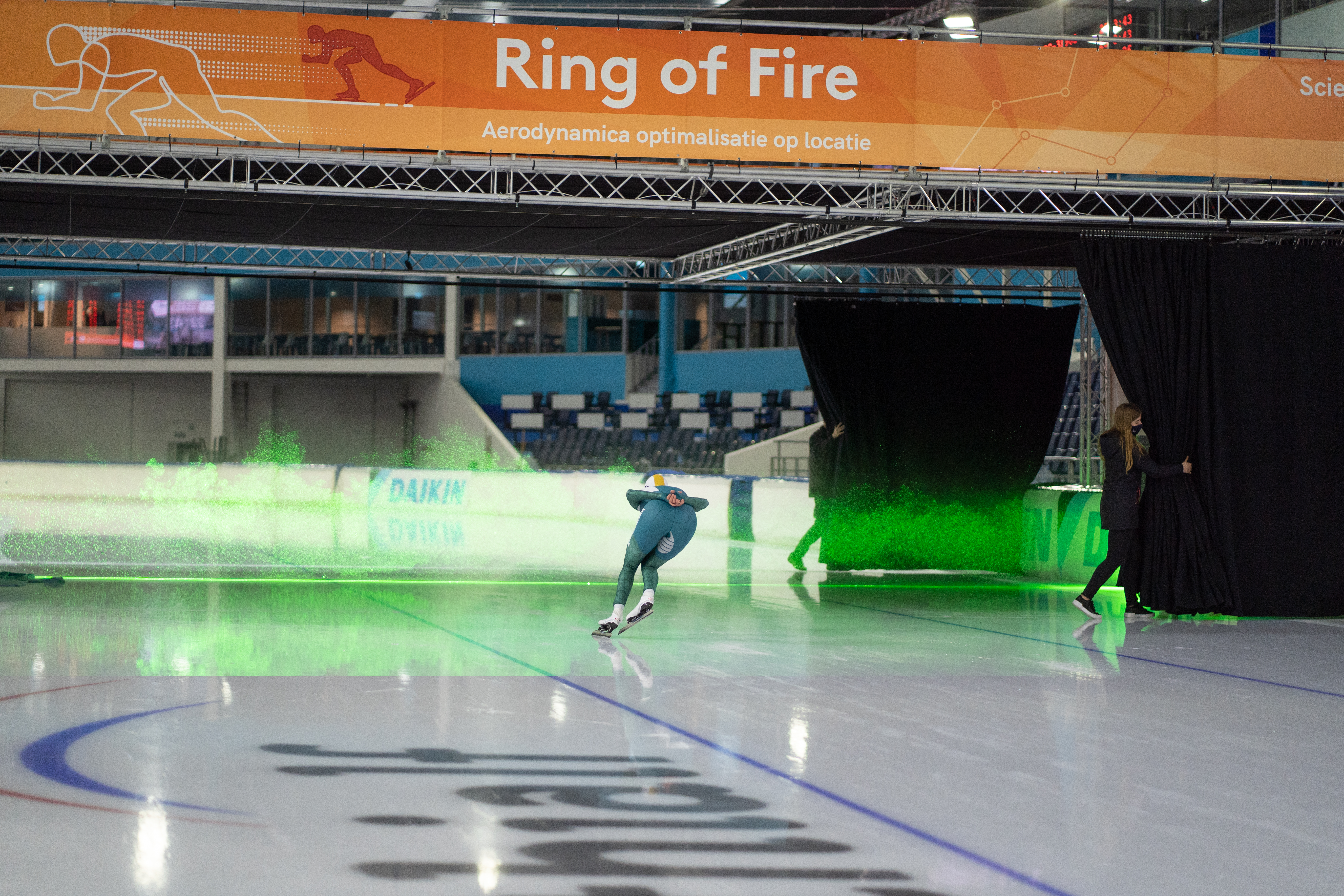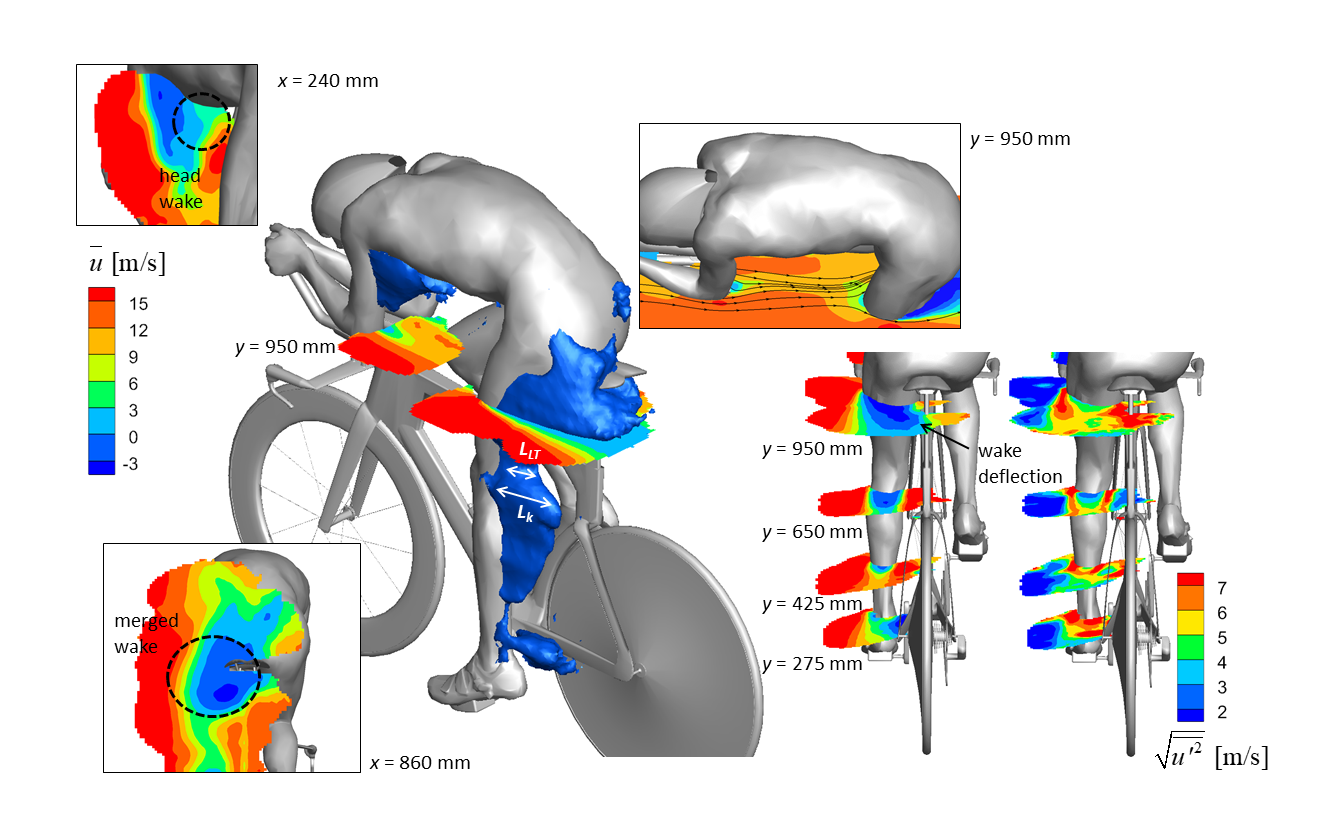Sports Aerodynamics
Many professional sports as cycling, ice skating and bobsleigh involve high speeds and are regularly won by fractions of a second. The role of aerodynamics in such sports is crucial in that a small reduction of the aerodynamic drag has direct consequences on the athlete’s race time. Several approaches for investigation of sports aerodynamics are conducted to optimize the athlete’s posture, equipment shape and materials for aerodynamic drag minimization, including wind tunnel measurements, track testing and numerical simulations by Computational Fluid Dynamics (CFD).
In these project, large-scale Particle Image Velocimetry is employed to conduct aerodynamic investigation in speed sports. The measurements are carried out in large-scale wind tunnels such as the Open Jet Facility (OJF) and the Low Turbulence Tunnel (LTT) or on-site with the Ring of Fire system. The velocity measurements provide information on the areas that are most critical for the generation of drag, thus enabling design optimizations that enhance the athlete’s performance.
Current research projects
The Ring of Fire
A novel approach for the on-site investigation of speed sports is introduced, the Ring of Fire. It consists of a tunnel where the athlete passes through during training. The use of tracer particles, illumination system and imaging system enables the flow velocity measurements in the wake of the athlete. The aerodynamic drag is measured using the conservation of momentum in a control volume, thus paving the way for optimization of the athlete’s posture, garment roughness and equipment shape for minimum aerodynamic drag. The Ring of Fire does not require the use of a wind tunnel and can therefore be used at the training ground of the athlete, for example a velodrome or an ice rink. An athlete can cycle or skate through the measurement setup during which all aerodynamic information is collected. This research is funded by the NWO TTW-domain Open Technology Program project 15583 “Enabling on-site sport aerodynamics with the Ring-of-Fire”.

Dr. Alexander Spoelstra
Flow visualization and optimization in sports
Sports aerodynamics involve unsteady three-dimensional flows around objects of complex geometries, such as an athlete with his or her equipment. Investigating the flow topology and its dependence upon the athlete’s posture and equipment is crucial to maximise the athlete’s performance and minimise the aerodynamic drag and in turn the race time. In this project, a combination of flow measurement techniques is deployed in the wind tunnels of the aerodynamic laboratories of TU Delft to investigate the flow topology and relate is to the aerodynamic loads: those include large-scale Particle Image Velocimetry, quantitative infrared thermography, pressure measurements and balance measurements. Particular focus is posed on the distribution of the critical Reynolds number along the athlete’s body or equipment, which gives information on how to modify the posture, shape or surface roughness to achieve minimum aerodynamic drag.

Dr.ir. W. (Wouter) Terra
Researcher
✉ W.Terra@tudelft.nl
Involved Professors

Prof.dr. F. (Fulvio) Scarano
Chairholder
✉ F.Scarano@tudelft.nl

Dr. A. (Andrea) Sciacchitano
Assistant Professor
✉ A.Sciacchitano
@tudelft.nl


